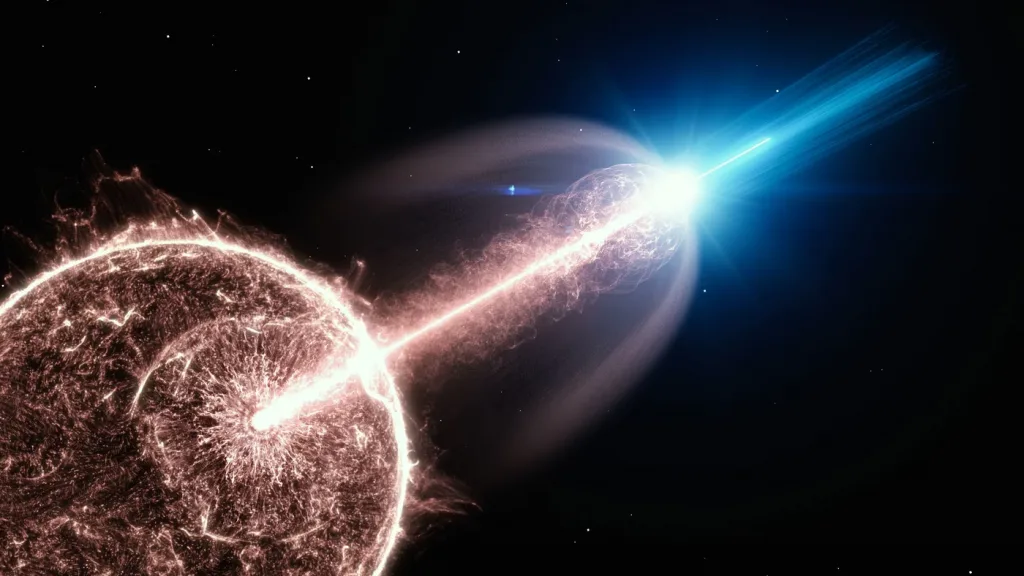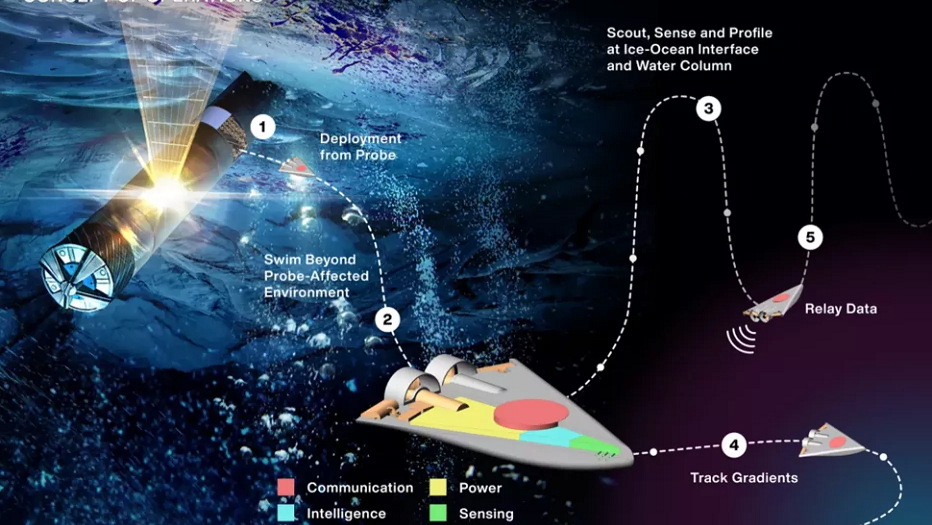
Frankfurt (Germany) Recently a team of astronomers was able to observe a huge gamma-ray burst with the help of the special telescopes of the “High Energy Stereoscopic System” H.E.S.S. In Namibia, astronomers were able to observe one of “the largest explosions in the universe”. There is a thesis that the phenomenon is related to the formation of neutron stars or black holes. In the case of the observation by the international team, a particularly large amount of energy was released. Probably a massive star in the galaxy “SDSS J025810.28-085719.2” collapsed and sent a gamma-ray burst into space. This was picked up by terrestrial telescopes on August 29, 2019 and was given the designation GRB 190829A. The observed explosion occurred around a billion light years away, which is relatively close from a scientific perspective. Because of this, the research team was able to use the telescope to recognize the glow of the lightning bolt.
Most of the time these gamma-ray bursts are only brief events, lasting a few seconds. In this short time, however, as much energy is released as our sun generates in a few billion years. The afterglow of a gamma-ray burst can then last for several days. Its radiation is billions of times more energetic than visible light. On its long way through the universe, the radiation is weakened further and further until it can be perceived by us on earth with a telescope.
As spectacular as “one of the largest explosions in the universe” may sound at first glance, gamma-ray bursts are not uncommon. But since their discovery in the 1960s, they have been puzzling scientists. GRB 190829A has become a little more exciting, as a team from the H.E.S.S.-Collaboration reports in the Science journal. The scientists succeeded in demonstrating the afterglow of this burst on earth with energies of up to 3.3 TeV.
Incidentally, this would not be possible directly – the high-energy light particles, the photons, meet the particles in the earth’s atmosphere after their journey through space. There they trigger a shower of low-energy secondary particles, the weak fluorescent light from which telescopes such as those from H.E.S.S. can be caught. In this way, the researchers were able to measure the energy spectrum of the afterglow of the gamma-ray flash.
In doing so, they made a peculiar discovery: the proportion of X-rays in the afterglow and the proportion of high-energy gamma radiation were amazingly similar. For example, the afterglow faded in both wavelength ranges in a similar manner and at a similar rate. As a result, both components may be based on the same physical mechanism. However, this contradicts the current theory of how gamma-ray bursts are generated and how they interact with their environment, or how it is even possible to generate gamma particles with energies in the range of teraelectron volts.
So far, scientists have concluded that they will have to wait for more gamma-ray bursts to collect additional data, because GRB 190829A was the first gamma-ray burst in which such a long measurement of its high-energy spectrum was possible. It remains to be seen whether the theory of gamma-ray bursts really needs to be adapted and whether they are not only the most powerful explosions in the universe, but also much better particle accelerators than previously assumed.
DESY created a video that simulates this particular burst, which can be seen here:





